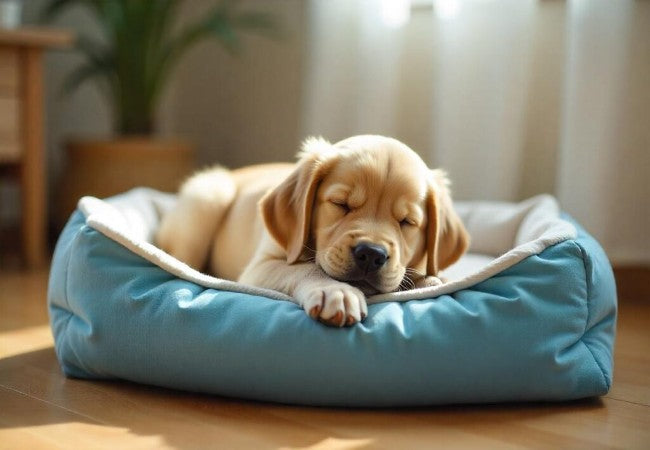Vet Approved Guide: Why Do Dogs Twitch in Their Sleep? Understanding Canine Sleep Behavior in 2025 💤🐶

In this article
Vet Approved Guide: Why Do Dogs Twitch in Their Sleep? Understanding Canine Sleep Behavior in 2025 💤🐶
By Dr. Duncan Houston BVSc
Have you ever noticed your dog twitching, paddling their paws, or making soft noises while asleep? 🐕💤 This behavior can be intriguing and sometimes concerning. Let's explore the reasons behind this common canine phenomenon. 🕵️♂️
🧬 The Science of Canine Sleep
Dogs, like humans, experience different stages of sleep, including:
- Non-Rapid Eye Movement (NREM): Light sleep where the body begins to relax. 😴
- Rapid Eye Movement (REM): Deep sleep stage associated with dreaming. 🛌
During REM sleep, dogs may exhibit twitching, paw movements, and vocalizations as they dream. This is a normal part of the sleep cycle. 🐾
🐶 Why Do Dogs Twitch During Sleep?
Twitching during sleep is often linked to:
- Dreaming: Dogs may relive daily activities or experiences in their dreams. 💤
- Development: Puppies have developing nervous systems, leading to more frequent twitching. 🐕🍼
- Aging: Senior dogs may experience increased twitching due to changes in brain function. 👴🐶
⚠️ When to Be Concerned
While twitching is usually harmless, consult a veterinarian if you notice:
- Prolonged or intense twitching: Could indicate seizures. 🚨
- Stiffness or rigidity: May be a sign of neurological issues. 🧠
- Unresponsiveness: If your dog doesn't wake easily, seek medical advice. 🩺
🛡️ Ensuring Your Dog's Comfort
To promote healthy sleep for your dog:
- Provide a comfortable and quiet sleeping environment. 🏡
- Maintain a regular sleep schedule. ⏰
- Ensure they get adequate exercise during the day. 🐕🦺
📱 Consult with Ask A Vet
If you're concerned about your dog's sleep behaviors, the Ask A Vet app connects you with licensed veterinarians for personalized advice. 🐾💬
Visit AskAVet.com or download the app today to ensure your furry friend's health and happiness. 📲






